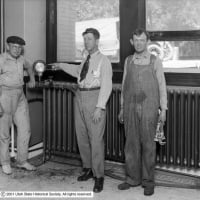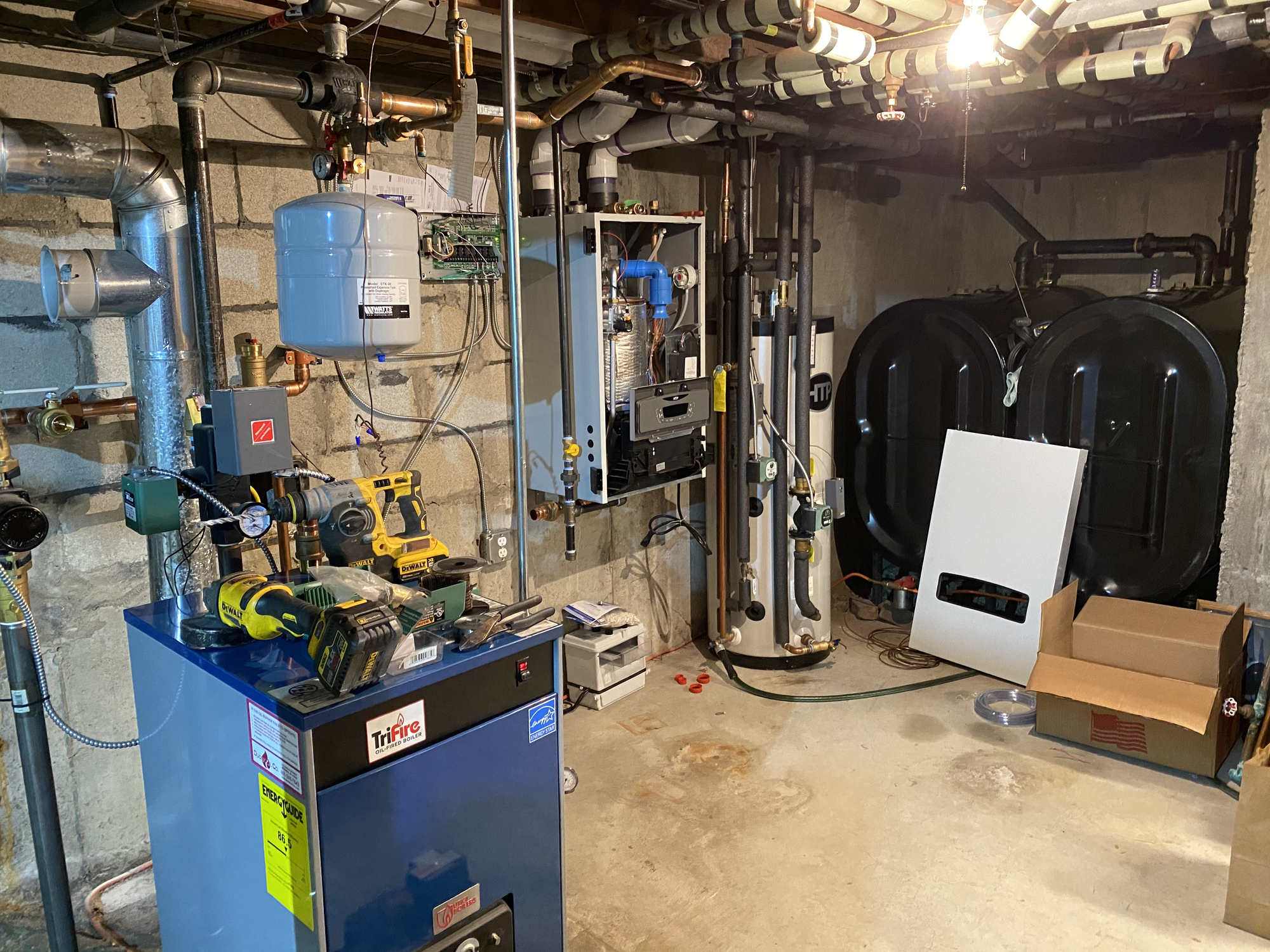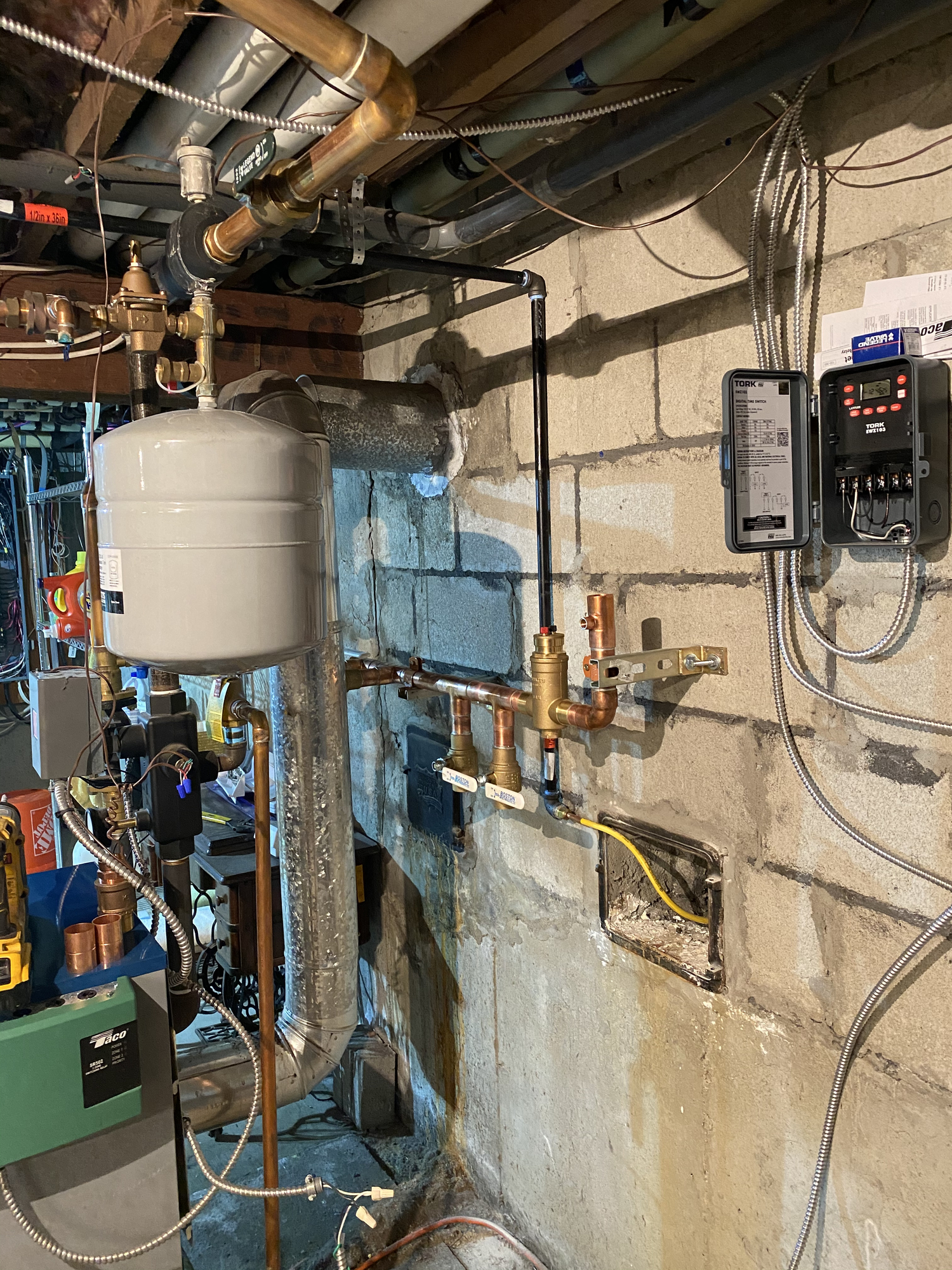Would You pipe this differently?





Comments
-
I can't exactly follow the piping from the pics, but I'd pipe both boilers injecting into the house loop through closely spaced Tees. I know it's an extra pump involved, but that way you'd only have to throw a switch to change over. Doing it like that, anyone (your wife family members, etc.) could do it without having to figure a valving arrangement.Bob Boan
You can choose to do what you want, but you cannot choose the consequences.0 -
That’s exactly what I’m doing. There’s an internal pump in the wall unit and one for the oil boiler with 6 pumps not shown in the ceiling that run the zones.Ironman said:
I can't exactly follow the piping from the pics, but I'd pipe both boilers injecting into the house loop through closely spaced Tees. I know it's an extra pump involved, but that way you'd only have to throw a switch to change over. Doing it like that, anyone (your wife family members, etc.) could do it without having to figure a valving arrangement.
Just a guy running some pipes.0 -
-
I am confused. Why is there a minimum distance from the tank? Is it a local code thing? Fire rating?EBEBRATT-Ed said:I am a little concerned about the distance from the boiler to the oil tank. I think 5' is minimum
Rick0 -
Prime candidate for a HydroSep
 Bob "hot rod" Rohr
Bob "hot rod" Rohr
trainer for Caleffi NA
Living the hydronic dream0 -
@rick in Alaska
I know Mass code was always that the tank had to be 5' from the oil boiler. Mass has since dumped there Code and adopted NFPA.
I am not sure what NFPA wants but I am sure there is some minimum distance.
I realize the new boiler is gas but is installed between the oil boiler and the tank....looks pretty close.
Just playing inspector here0 -
Thanks for the clarification. It makes sense where you are. I don't think about it because virtually all our tanks are outside on stands, so no where close to the burner.EBEBRATT-Ed said:@rick in Alaska
I know Mass code was always that the tank had to be 5' from the oil boiler. Mass has since dumped there Code and adopted NFPA.
I am not sure what NFPA wants but I am sure there is some minimum distance.
I realize the new boiler is gas but is installed between the oil boiler and the tank....looks pretty close.
Just playing inspector here
Rick0 -
@rick in Alaska
I did look it up in NFPA-31 oil code and it is 5' tank to any source of ignition unlsee you put a 1 hour fire wall in between1 -
So I was inspected today. Oil burner is 10’ and any other ignition source or appliance is 5’ or a 1-hour barrier. He’s asking me to hang some drywall but not secure it and that will suffice. Really nice guy. Passed my gas main.EBEBRATT-Ed said:@rick in Alaska I did look it up in NFPA-31 oil code and it is 5' tank to any source of ignition unlsee you put a 1 hour fire wall in between
Just a guy running some pipes.0 -
-
-
Source of IgnitionTimco said:
Electrical equipment is a source of ignition if it creates an arc or spark during operation.
Cir maybe, maybe not. T-Stat YES!
This is all up to the building inspector
0 -
Us a thermistor and the boiler's control for the indirect. No switch on the water heater then...
Do explosion proof switches with some sort of shielding still count as a source of ignition?0
Categories
- All Categories
- 87.3K THE MAIN WALL
- 3.2K A-C, Heat Pumps & Refrigeration
- 61 Biomass
- 427 Carbon Monoxide Awareness
- 119 Chimneys & Flues
- 2.1K Domestic Hot Water
- 5.8K Gas Heating
- 114 Geothermal
- 165 Indoor-Air Quality
- 3.7K Oil Heating
- 76 Pipe Deterioration
- 1K Plumbing
- 6.5K Radiant Heating
- 395 Solar
- 15.6K Strictly Steam
- 3.4K Thermostats and Controls
- 56 Water Quality
- 51 Industry Classes
- 50 Job Opportunities
- 18 Recall Announcements



